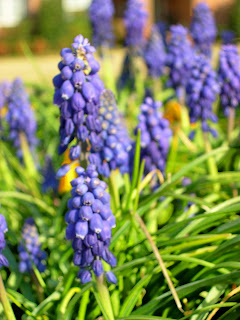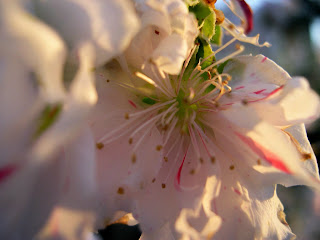Populations fluctuate from year to year, with outbreaks occurring every several years. Defoliation of trees, building of unsightly silken nests in trees, and wandering caterpillars crawling over plants, walkways, and roads cause this insect to be a pest in the late spring and early summer.
Eastern tent caterpillar nests are commonly found on wild cherry, apple, and crabapple, but may be found on hawthorn, maple, cherry, peach, pear and plum as well.
And they're back this spring--this time in a crotch on the Yoshino cherry tree. The eastern tent caterpillar overwinters as an egg within an egg mass of 150 to 400 eggs. These masses are covered with a shiny, black varnish-like material and encircle branches that are about pencil-size or smaller in diameter.
The caterpillars hatch about the time the buds begin to open, usually in early March. These insects are social; caterpillars from one egg mass stay together and spin a silken tent in a crotch of a tree. Caterpillars from two or more egg masses may unite to form one large colony. During the heat of the day or rainy weather, the caterpillars remain within the tent. They emerge to feed on leaves in the early morning, evening, or at night when it is not too cold.
The larvae are hairy caterpillars, black with a white stripe down the back, brown and yellow lines along the sides, and a row of oval blue spots on the sides. As the larvae feed on the foliage, they increase the size of the web until it is a foot or more in length. In 4 to 6 weeks, the caterpillars are full grown and 2 to 2-1/2 inches long. At this time, they begin to wander away individually from the nest in search of protected areas in which to spin a cocoon. The cocoon is about 1 inch long and made of closely woven white or yellowish silk and is attached to other objects by a few coarser threads. The adult moth emerges from the cocoon about 3 weeks later.
My ususal organic strategy for dealing with these pesky pests is to apply Bt (Bacillus thuringiensis) after I've disturbed the nest with a long bamboo cane. The Bt spray must come into direct contact with the larvae in order to work. Unlike typical nerve-poison insecticides, Bt acts by producing proteins (delta-endotoxin, the "toxic crystal") that reacts with the cells of the gut lining of susceptible insects. These Bt proteins paralyze the digestive system, and the infected insect stops feeding within hours. Bt-affected insects generally die from starvation, which can take several days. I've never had an in-season return of the caterpillars after applying Bt. A couple of suggestions: (1) if you spray up into the tree, watch out for residual mist coming back down onto your face, and (2) beware of falling caterpillars! I'd recommend a hat, goggles, and a face mask. Gross!









